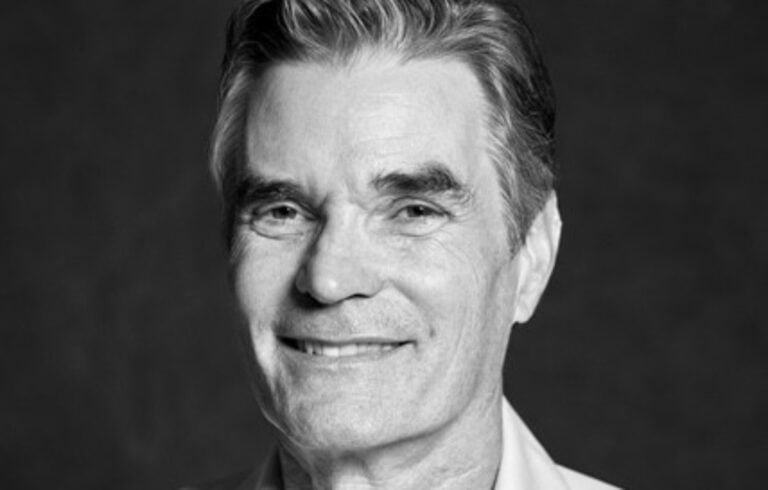


When asked to share personal career success recipes at public events, time-pressed CEOs are often tempted to lean on PR advisors, recycled proverbs or even AI chatbots. But leaders need to do better, drawing inspirational insights from their life trajectories, including the inevitable bumps experienced along the way.
This was underscored recently when CNN’s Michael Smerconish played a montage of clichéd commencement addresses on a recent show, including Steve Jobs and Oprah Winfrey opining on doing what you enjoy. The tactic provoked his guest, NYU professor and podcast titan Scott Galloway, to weigh in: “The key to… success is getting beamed in the face, professionally and personally, and getting back up. Success is a squiggly line.” Smerconish then recounted his own experience of being turned down for five high-profile television jobs, despite having been groomed for them by prominent anchors for years prior.
In my study of CEO careers entitled The Hero’s Farewell (Oxford University Press), I showed that all great leaders follow the pattern mapped by anthropologist Joseph Campbell in The Hero With a Thousand Faces. Campbell outlined a universal cultural quality—the monomyth of the hero. The heroic life stages include a depiction of common origins of the hero, a separation from the hero’s village and anchors, the noble adventures of the heroic quest, a crushing setback—perhaps even near-death—followed by resilience from adversity that fortifies the hero’s character. It is the resilience demonstrated after adversity that punctuates and defines a heroic career.
Accordingly, great CEOs help and inspire when they tell the unvarnished truth of their trials, failures and triumphs in full context, unafraid of surfacing setbacks and in no hurry to trumpet their successes.
In meeting with store managers around the nation, Home Depot co-founders Bernie Marcus and Arthur Blank would explain how they were fired from an earlier home improvement retail chain by an activist investor. Their lessons on moving from Los Angeles to Atlanta to start from scratch again is an inspiring saga of rejuvenation.
Anne Mulcahy took over Xerox when it faced collapse and assiduously worked to build the company up, demonstrating impressive turnaround skills. However, early on, she inadvertently crushed the stock price by talking to analysts about the need to preempt product obsolescence that had not yet happened. The revealed risk set off a panic among investors. She turned that talking-point error into a lesson for others to be able to discuss and correct their own mistakes.
Mulcahy also recounted her practice of going to factories and sharing with employees how bad things really were and Xerox’s plans for improvement, rather than push sugarcoated messages. Such candor gives great credibility. Ford’s Mark Fields did the same in his Way Forward campaign in which management took ownership of prior failures and lessons learned from them.
Jimmy Dunne, the CEO who rebuilt investment bank Sandler O’Neill after losing one-third of his workers in the 9/11 attack, showed a similar blend of toughness and sensitivity to build confidence in a traumatized enterprise. Rather than just pursuing returns, he gave financiers the loftier mission of providing for the families of colleagues lost in the attack, as well as assisting the families of the firefighters who perished rushing into those buildings. Adversity was channeled into a sense of purpose that enabled Sandler O’Neill, which recently merged with Piper Jaffray, to thrive.
Facing up to setback is the true recipe to success—and far more interesting to audiences than platitudes about passion. As Nietzsche advised, “What does not kill me makes me stronger.”




0

1:00 - 5:00 pm
Over 70% of Executives Surveyed Agree: Many Strategic Planning Efforts Lack Systematic Approach Tips for Enhancing Your Strategic Planning Process
Executives expressed frustration with their current strategic planning process. Issues include:
Steve Rutan and Denise Harrison have put together an afternoon workshop that will provide the tools you need to address these concerns. They have worked with hundreds of executives to develop a systematic approach that will enable your team to make better decisions during strategic planning. Steve and Denise will walk you through exercises for prioritizing your lists and steps that will reset and reinvigorate your process. This will be a hands-on workshop that will enable you to think about your business as you use the tools that are being presented. If you are ready for a Strategic Planning tune-up, select this workshop in your registration form. The additional fee of $695 will be added to your total.

2:00 - 5:00 pm
Female leaders face the same issues all leaders do, but they often face additional challenges too. In this peer session, we will facilitate a discussion of best practices and how to overcome common barriers to help women leaders be more effective within and outside their organizations.
Limited space available.

10:30 - 5:00 pm
General’s Retreat at Hermitage Golf Course
Sponsored by UBS
General’s Retreat, built in 1986 with architect Gary Roger Baird, has been voted the “Best Golf Course in Nashville” and is a “must play” when visiting the Nashville, Tennessee area. With the beautiful setting along the Cumberland River, golfers of all capabilities will thoroughly enjoy the golf, scenery and hospitality.
The golf outing fee includes transportation to and from the hotel, greens/cart fees, use of practice facilities, and boxed lunch. The bus will leave the hotel at 10:30 am for a noon shotgun start and return to the hotel after the cocktail reception following the completion of the round.